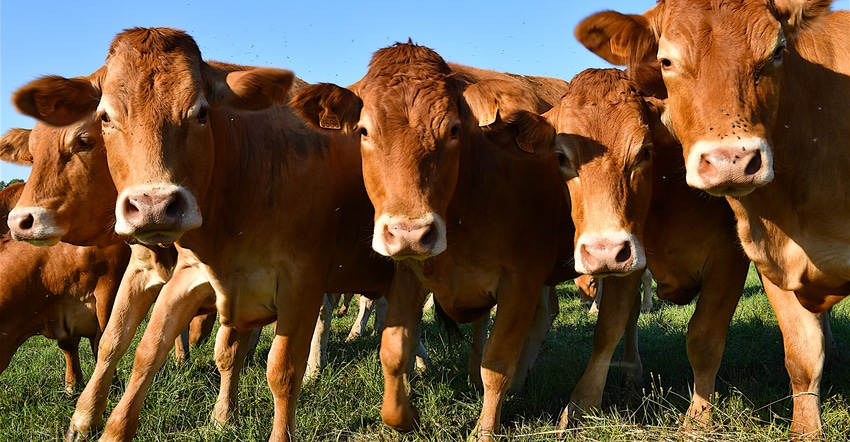June 25, 2020

As spring calving has wrapped up, it is time to turn your attention toward breeding season. Often when we think about breeding season, we think about preparing cows and heifers with vaccinations, parasite control, etc., to ensure a successful breeding season — but what about bulls?
One way to ensure bulls are ready for the task at hand is through performing breeding soundness exams on the herd sire arsenal. BSEs provide cow-calf producers with a little insurance that their bulls are capable and in the right condition to breed cows effectively. However, few cow-calf producers implement BSEs on their bulls.
A BSE looks at three components of a bull: physical structure, reproductive organs and semen.
1. Physical structure. Bulls should be able to move about the pasture with ease on a good set of feet and legs free from any discomfort. Any feet and leg issues could be detrimental to the bull’s breeding ability.
The bull’s body condition score should also be taken into account, as bulls that are too thin or overly conditioned can be less active. At the start of breeding season, bulls should be between 5.5 and 6.5 BCS, meaning they have full muscling, their backbone and ribs are not visible, and some fat may be deposited in their briskets and around their tail heads.
2. Reproductive organs. During the BSE, the bull’s internal and external reproductive organs will be examined to ensure no injuries or defects. The bull’s scrotal circumference will be measured and must meet a minimum requirement for his age to pass a BSE. Scrotal circumference is especially important in immature bulls, as it is used as an indicator for semen volume.
3. Semen quality. A sample of semen will be collected during the BSE and will be checked for sufficient motility and morphology (proper shape). The semen sample will also be checked for white blood cells that could diminish the bull’s reproductive ability.
Exam timing
Breeding soundness exams should be conducted at the proper time, as spermatogenesis (the process of producing sperm) takes 60 days. BSEs should be conducted after the cold winter months, when injury due to cold temperatures could occur, and before breeding season so that if a bull is declared unsatisfactory to breed, he can be replaced or substituted.
BSEs are a valuable tool that can save cow-calf producers time and money by preventing the use of bulls with the inability to settle cows. One unsatisfactory bull can have a negative impact on a herd’s conception rate, calving window and weaning weights, resulting in a potential loss of profit.
Cauffman is the Extension agriculture educator in Grant County, Wis. This column is provided by the University of Wisconsin-Extension’s Wisconsin Beef Information Center.
You May Also Like




